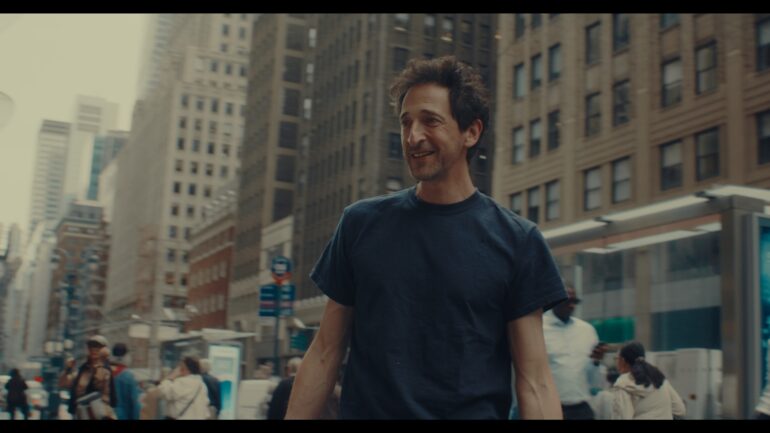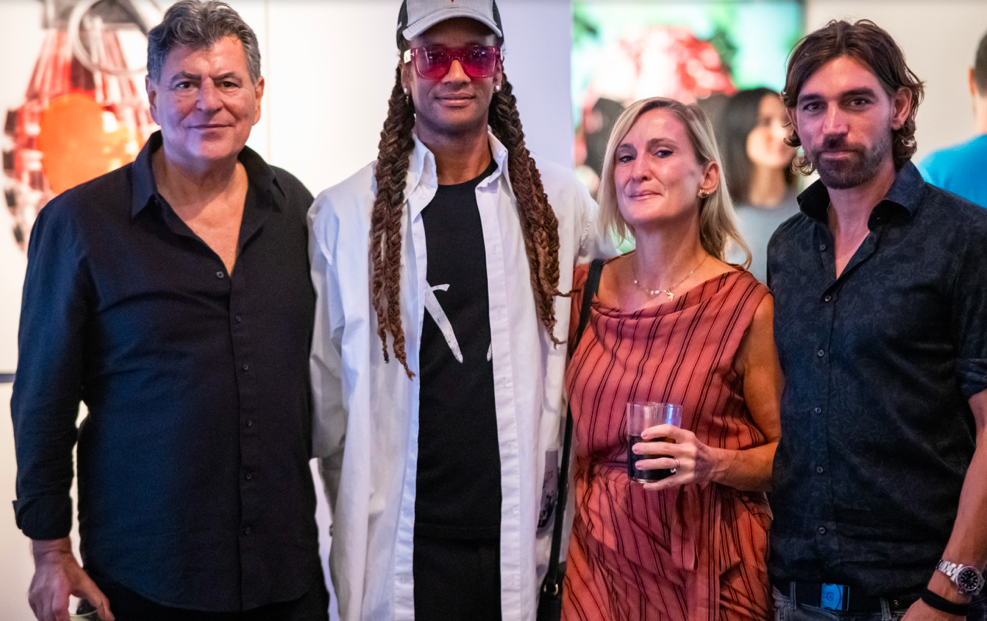Adrien Brody, the Oscar-winning actor best known for his haunting performance in The Pianist, is now turning heads not on screen—but on canvas. His latest solo exhibition in New York has sparked a wave of strong reactions, including some sharply critical commentary from the art world. But at Culturalee, we see Brody’s work as a compelling continuation of the American Pop Art tradition, deeply rooted in both popular culture and personal narrative.
Brody’s solo exhibition Made in America– curated by Oz Biri–is at EDEN House of Art on Madison Avenue in New York City until 28th June is his first exhibition in nearly a decade and features large-scale mixed media paintings alongside original sound compositions and immersive installation work. Made in America explores the beauty and tragedy of American culture and Brody’s artworks feature graffiti-tagged trains, fast food mascots and pixelated icons colliding with fractured memories.
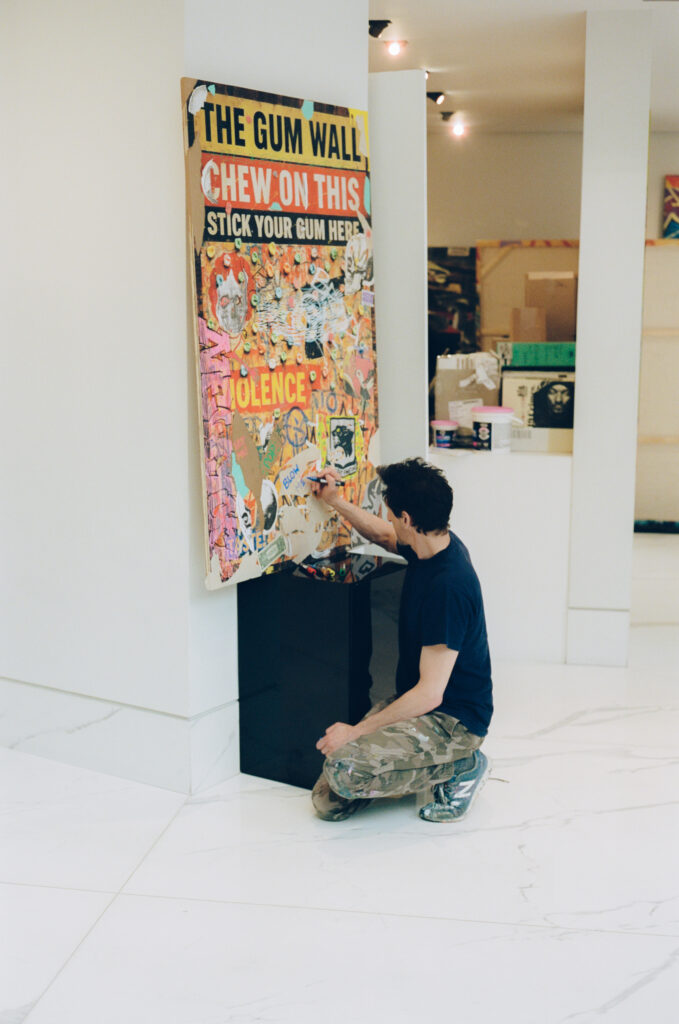
“Made in America is a deeply personal body of work that exists somewhere between autobiography and cultural archaeology. Each painting is a visual beat, composed from the debris of my childhood: fast food mascots, graffiti-tagged trains, pixelated icons. These aren’t just images; they’re artifacts of a culture that glamorizes violence, sells innocence, and packages nostalgia as a product. Over time, their meanings distort until we forget what we are really being sold.” Adrien Brody
While critics may bristle at yet another celebrity crossing over into the visual arts, Brody’s paintings and collages show a layered sensibility shaped not only by the vibrant visual language of Pop Art and New York City street paste-ups, but also by his background as the son of Hungarian immigrants and his childhood in Queens during the 1990s. Brody’s mother, the acclaimed photographer Sylvia Plachy—herself a refugee who fled the Hungarian Revolution—has lent several of Brody’s childhood artworks to the exhibition. These early pieces, some painted directly onto her discarded photo prints, reveal a lifelong engagement with image-making that long predates his public fame.
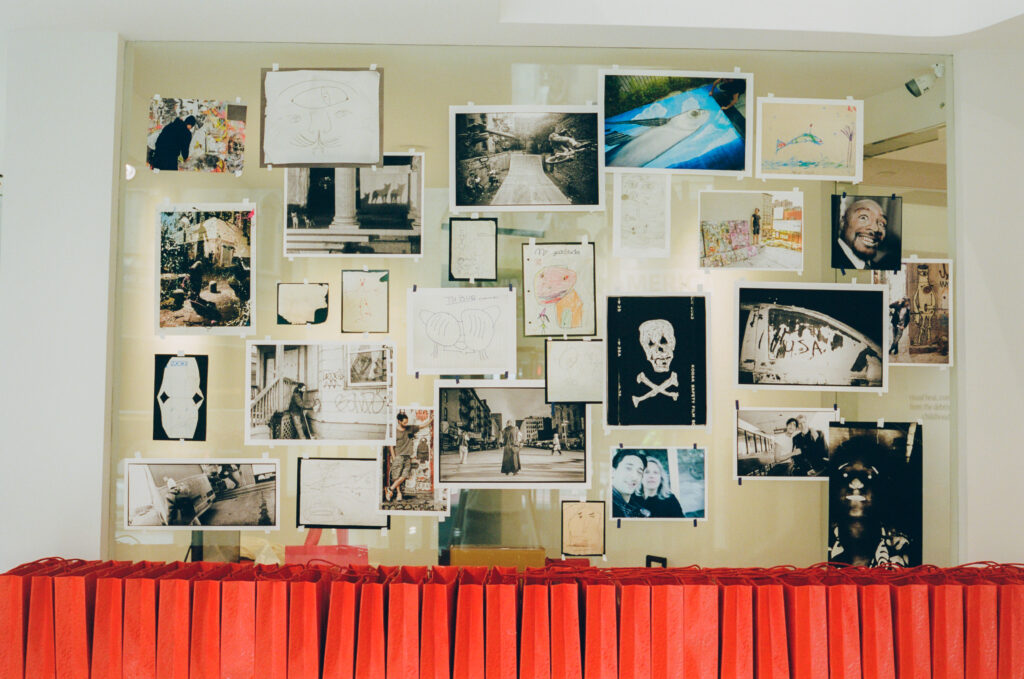
The exhibition is filled with familiar icons—Betty Boop, Donald Duck, Mickey Mouse—appropriated and reimagined with a nostalgic yet critical lens. But Brody’s most striking contribution may be Vermin, a nuanced series of collaged works featuring mice and rats as unlikely protagonists. Far from caricature, these creatures stand as emblems of survival, resilience, and displacement—symbols drawn directly from his mother’s refugee experience and the ongoing prejudice faced by immigrants around the world. His rodents aren’t pests, but survivors.
“My first experiments with collage began as a child, painting directly onto my mother Sylvia Plachy’s discarded photo prints. I grew up in a home where art wasn’t a profession, it was how we made sense of the world.” Adrien Brody
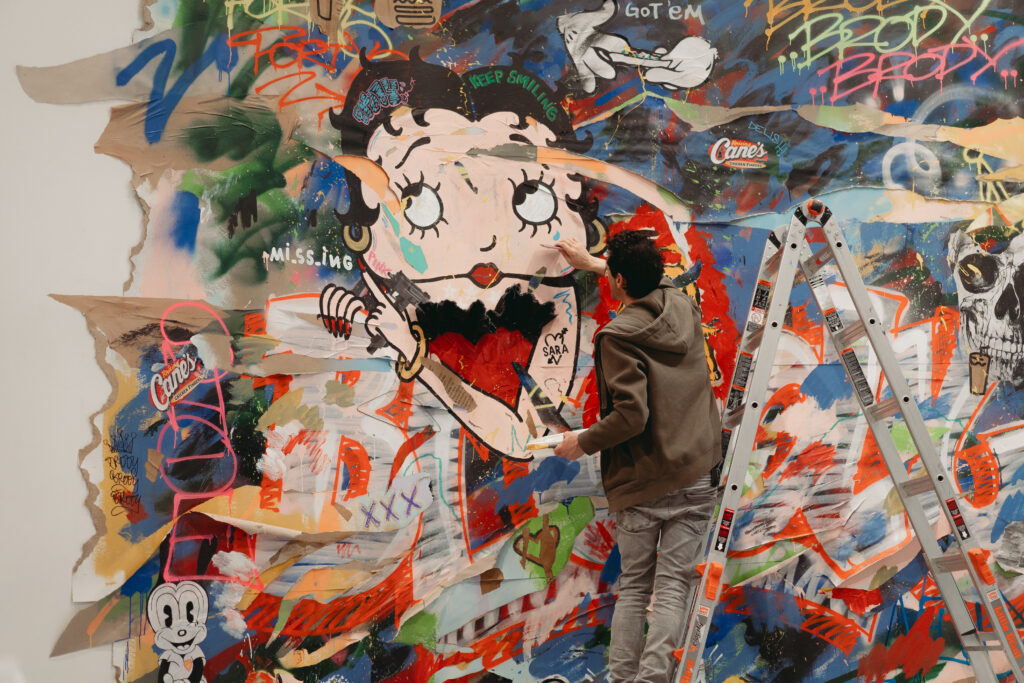
This is not art in a vacuum. Brody recently sold one of his Marilyn Monroe artwork for $425,000 at the amfAR fundraising gala in Cannes, directing proceeds to the amfAR Cinema against AIDS benefit and underscoring his commitment to using his platform for social good. Brody joins a notable lineage of multi-hyphenate talents—actors and musicians like David Bowie, Johnny Depp, and Pierce Brosnan—who have successfully bridged the worlds of celebrity and fine art.
Love it or loathe it, Brody’s art refuses to be ignored. And in this new exhibition, he offers more than just surface pop—he delivers a visual narrative deeply rooted in personal memory, cultural symbolism, and political resonance.
“My creative worlds are not separate, they are simultaneous. For me, they all pour from the same well. Each is a form of collage: collecting fragments, details, moments, and memories, and building something cohesive from the chaos.”
Adrien Brody
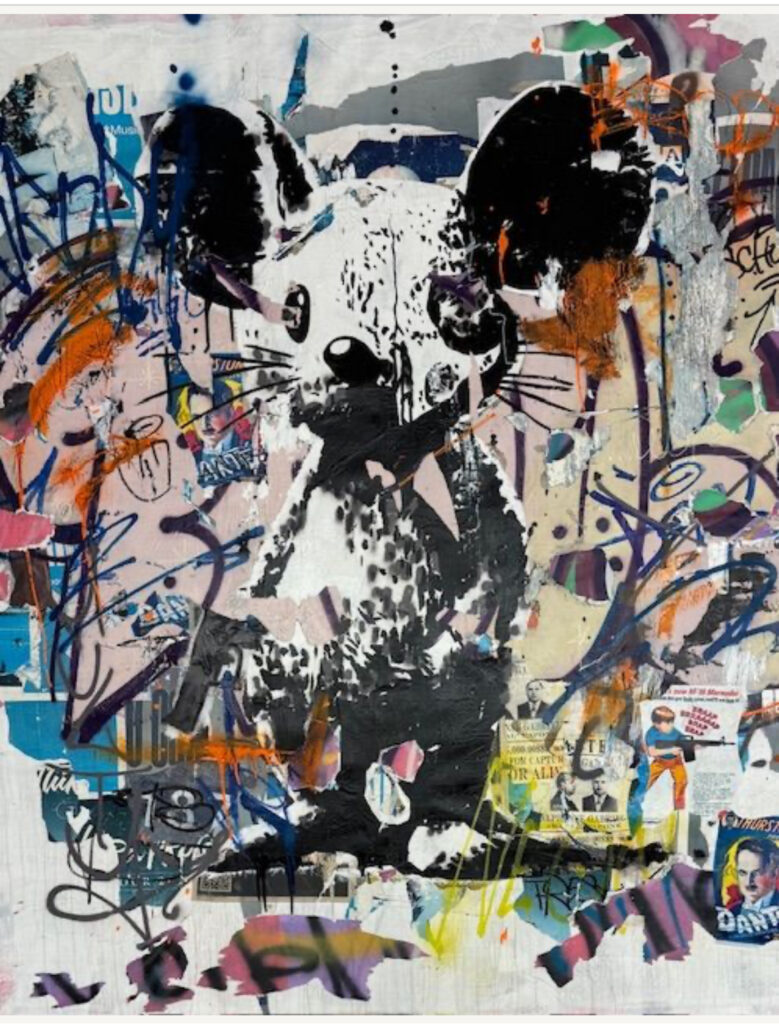
Brody’s multimedia approach brings together painting, photography, music, and installation in a layered exploration of identity and consumption. A soundscape composed by the artist blends hip-hop loops, ambient field recordings, and sampled noise to accompany the work. Filtered through the techniques of collage, mixed media, and music, the work becomes a study in cultural layering: how mass media, personal memory, and urban rhythm converge to form identity.
Referencing both urban mythology and historical atrocity, the work traces the weaponization of the term “vermin”—from casual slur to genocidal ideology. It laid the groundwork for the Holocaust, where Zyklon B, an insecticide used to kill lice, became the gas of extermination camps. In 1930s Nazi Germany, Mickey Mouse was denounced as a “filthy, dirt-caked vermin,” a symbol of Jewish influence and capitalist decay. Brody blends cartoon imagery with visual cues from vintage extermination ads and pest control signage to expose the normalized cruelty embedded in mass culture. “What we do need to rid ourselves of is the desensitization and dehumanization within our society,” he explains. By placing these creatures at the center of his compositions, Brody reclaims them as avatars of defiance—survivors in a world that insists they remain unseen.
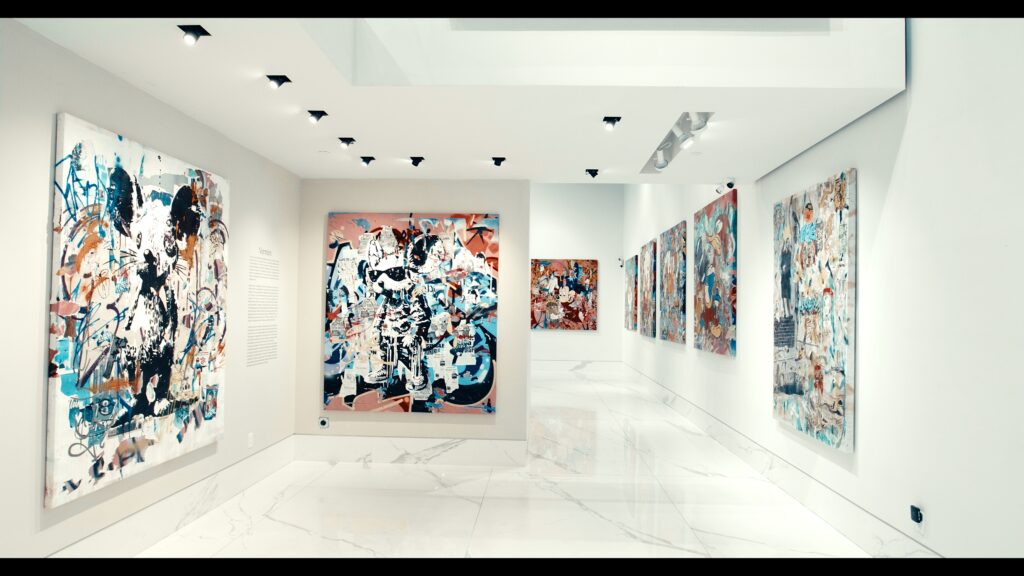
Also featured in the exhibition is a participatory installation entitled The Gum Wall, which invites visitors to physically contribute to the work. Accompanied by the phrase “Chew on This”, the piece acts as a “living monument to the throwaway culture of America.”
“It functions as both sculpture and social commentary, where visitors chew, stick, tag, and contribute to a collaborative expression of rebellion and rot. Inspired by street culture, vandalism-as-gesture, and communal graffiti, this wall isn’t just for looking. It’s a place to leave your mark—viscerally, messily, anonymously.” Adrien Brody.
Adrien Brody Made in America is at Eden Gallery in New York until 28th June, 2025.
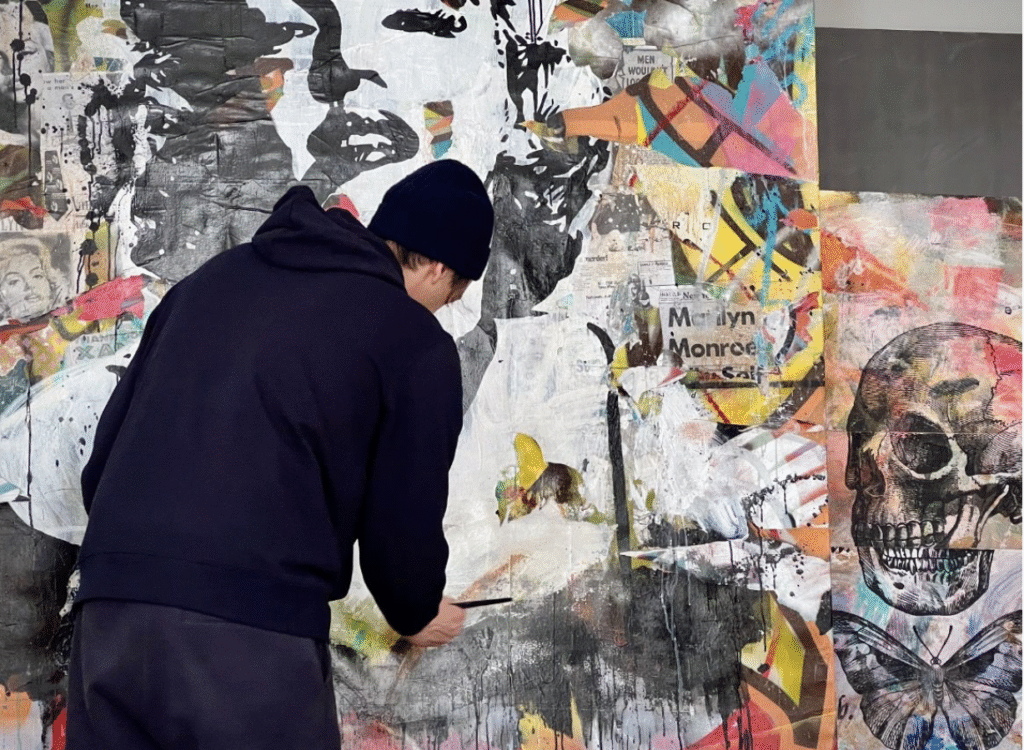
“Adrien’s work embodies the very essence of what EDEN, House of Art was founded to champion—art that is fearless, deeply personal, and rooted in cross-disciplinary exploration. We’ve long been fascinated by Adrien’s ability to move seamlessly between film, painting, sound, and performance. With Made in America, he offers an unflinching yet poetic interrogation of identity and memory that perfectly reflects our commitment to artists who blur boundaries and challenge convention.”
Cathia Kimolsy, CEO of EDEN, House of Art.
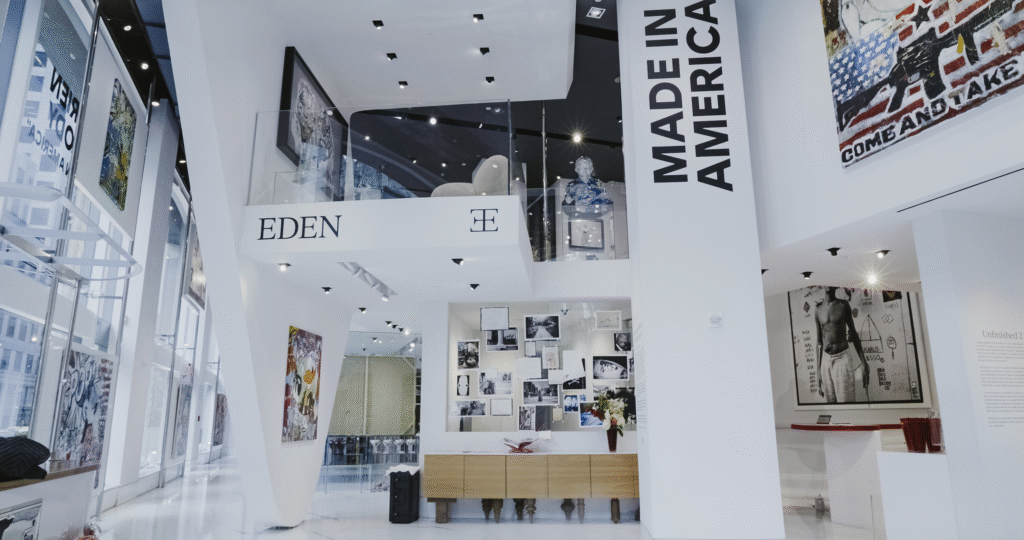
Images Courtesy of EDEN House of Art.


